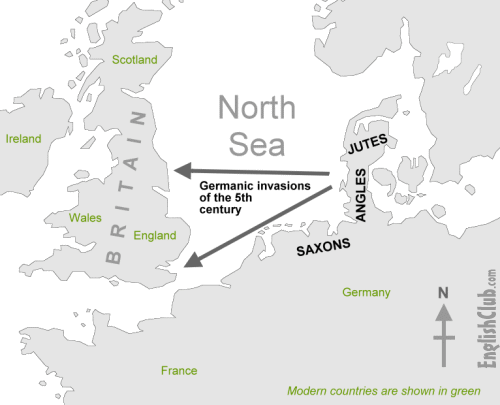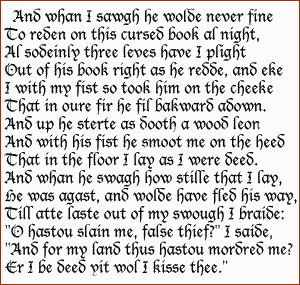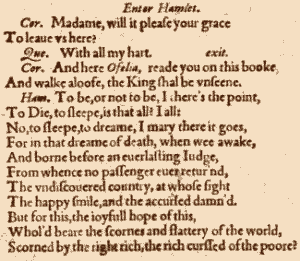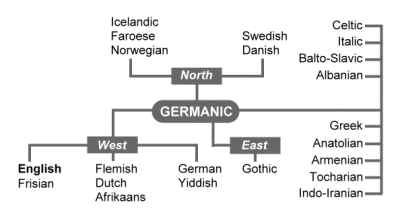Blog
Drug addiction in young
21/06/2012 17:02
ALCOHOLISM
17/06/2012 09:57
Plants, allied health.
13/06/2012 20:48If we could ask you a riddle: What is something that takes all shapes and sizes, can help prevent cancer, heart disease and obesity? And the answer is no magic diet pills based on, but: VEGETABLES.
Some societies as advanced as the U.S., with high living standards are not aware of this. More than half of Americans do not eat other vegetables potatoes, beans and some salad. This means very little variety.
Links in Euroresidentes:
Fruits and vegetables in season for each month.
Vegetarian
Food and properties
ThinDictionary of Cooking, food and food

1. Vegetables have very few calorías.En our society more and more overweight people. To lose the kilos left over we have to eat fewer calories and increase our activity level. Eating vegetables in main dishes of our meals can help you lose weight.
History of the English Languaje
13/06/2012 15:18
A short history of the origins and development of English
The history of the English language really started with the arrival of three Germanic tribes who invaded Britain during the 5th century AD. These tribes, the Angles, the Saxons and the Jutes, crossed the North Sea from what today is Denmark and northern Germany. At that time the inhabitants of Britain spoke a Celtic language. But most of the Celtic speakers were pushed west and north by the invaders - mainly into what is now Wales, Scotland and Ireland. The Angles came from "Englaland" [sic] and their language was called "Englisc" - from which the words "England" and "English" are derived.

Germanic invaders entered Britain on the east and south coasts in the 5th century.
Old English (450-1100 AD)
 Part of Beowulf, a poem written in Old English. |
The invading Germanic tribes spoke similar languages, which in Britain developed into what we now call Old English. Old English did not sound or look like English today. Native English speakers now would have great difficulty understanding Old English. Nevertheless, about half of the most commonly used words in Modern English have Old English roots. The words be,strong and water, for example, derive from Old English. Old English was spoken until around 1100.
Middle English (1100-1500)
 An example of Middle English by Chaucer. |
In 1066 William the Conqueror, the Duke of Normandy (part of modern France), invaded and conquered England. The new conquerors (called the Normans) brought with them a kind of French, which became the language of the Royal Court, and the ruling and business classes. For a period there was a kind of linguistic class division, where the lower classes spoke English and the upper classes spoke French. In the 14th century English became dominant in Britain again, but with many French words added. This language is called Middle English. It was the language of the great poet Chaucer (c1340-1400), but it would still be difficult for native English speakers to understand today.
Modern English
Early Modern English (1500-1800)
Towards the end of Middle English, a sudden and distinct change in pronunciation (the Great Vowel Shift) started, with vowels being pronounced shorter and shorter. From the 16th century the British had contact with many peoples from around the world.

Hamlet's famous "To be, or not to be" lines, written in Early Modern English by Shakespeare.
|
This, and the Renaissance of Classical learning, meant that many new words and phrases entered the language. The invention of printing also meant that there was now a common language in print. Books became cheaper and more people learned to read. Printing also brought standardization to English. Spelling and grammar became fixed, and the dialect of London, where most publishing houses were, became the standard. In 1604 the first English dictionary was published.
Late Modern English (1800-Present)
The main difference between Early Modern English and Late Modern English is vocabulary. Late Modern English has many more words, arising from two principal factors: firstly, the Industrial Revolution and technology created a need for new words; secondly, the British Empire at its height covered one quarter of the earth's surface, and the English language adopted foreign words from many countries.
Varieties of English
From around 1600, the English colonization of North America resulted in the creation of a distinct American variety of English. Some English pronunciations and words "froze" when they reached America. In some ways, American English is more like the English of Shakespeare than modern British English is. Some expressions that the British call "Americanisms" are in fact original British expressions that were preserved in the colonies while lost for a time in Britain (for example trash for rubbish, loan as a verb instead of lend, and fall for autumn; another example, frame-up, was re-imported into Britain through Hollywood gangster movies). Spanish also had an influence on American English (and subsequently British English), with words like canyon, ranch, stampede and vigilante being examples of Spanish words that entered English through the settlement of the American West. French words (through Louisiana) and West African words (through the slave trade) also influenced American English (and so, to an extent, British English).
Today, American English is particularly influential, due to the USA's dominance of cinema, television, popular music, trade and technology (including the Internet). But there are many other varieties of English around the world, including for example Australian English, New Zealand English, Canadian English, South African English, Indian English and Caribbean English.
The Germanic Family of Languages

English is a member of the Germanic family of languages.
Germanic is a branch of the Indo-European language family.
| A brief chronology of English | ||
|---|---|---|
| 55 BC | Roman invasion of Britain by Julius Caesar. | Local inhabitants speak Celtish |
| AD 43 | Roman invasion and occupation. Beginning of Roman rule of Britain. | |
| 436 | Roman withdrawal from Britain complete. | |
| 449 | Settlement of Britain by Germanic invaders begins | |
| 450-480 | Earliest known Old English inscriptions. | Old English |
| 1066 | William the Conqueror, Duke of Normandy, invades and conquers England. | |
| c1150 | Earliest surviving manuscripts in Middle English. | Middle English |
| 1348 | English replaces Latin as the language of instruction in most schools. | |
| 1362 | English replaces French as the language of law. English is used in Parliament for the first time. | |
| c1388 | Chaucer starts writing The Canterbury Tales. | |
| c1400 | The Great Vowel Shift begins. | |
| 1476 | William Caxton establishes the first English printing press. | Early Modern English |
| 1564 | Shakespeare is born. | |
| 1604 | Table Alphabeticall, the first English dictionary, is published. | |
| 1607 | The first permanent English settlement in the New World (Jamestown) is established. | |
| 1616 | Shakespeare dies. | |
| 1623 | Shakespeare's First Folio is published | |
| 1702 | The first daily English-language newspaper, The Daily Courant, is published in London. | |
| 1755 | Samuel Johnson publishes his English dictionary. | |
| 1776 | Thomas Jefferson writes the American Declaration of Independence. | |
| 1782 | Britain abandons its colonies in what is later to become the USA. | |
| 1828 | Webster publishes his American English dictionary. | Late Modern English |
| 1922 | The British Broadcasting Corporation is founded. | |
| 1928 | The Oxford English Dictionary is published. | |
Isaac Newton
13/06/2012 14:22
Advances in medicine
12/06/2012 22:14
First blog
01/06/2012 00:15Our new blog has been launched today. Stay focused on it and we will try to keep you informed. You can read new posts on this blog via the RSS feed.
MYTHOLOGICAL BEINGS
30/05/2012 15:00
MYTHOLOGICAL BEINGS
Then we will begin the first chapter of Greek mythology that is dedicated to all who are interested in reading the ancient Hellenic literature.
The first works that came into our hands are called Homer "The Iliad" and "The Odyssey" that form the basis of literary knowledge of the West. Both are difficult to understand if you do not have on hand a glossary of Greek mythology.
To kick off this first part we selected the twelve gods of Olympus immediately accompanied by its Latin name.
For example, Aphrodite, the Greek name / Venus, Roman name. In a text called "Gods and heroes of Greek mythology."
Transcription and opening paragraph of Xrisí Tefarikis Athina.Aphrodite
VENUS
She is the goddess of love. Born from the foam of the sea of Cyprus fertilized by the genitals of Heaven / Uranus, thrown there by his son Cronus / Saturn after being castrated. Aphrodite is the "lover's smile," "braiding of deception.
"During the trial in Paris, nothing could the majesty of the goddess Hera and Athena's bellicosity against its seductive beauty. It was the protector of Paris and Troy, and then the Latin hero Aeneas, the son of Anchises and symbolic founder of Rome.
Fertility is also in plant and animal nature. The dove is the bird lewd. His son is Eros the archer capricious Cupid-Latin two darts, one for happy love for the unfortunate other.
TOP
APOLLO
The god of light, son of Zeus and Leto, was born in the brilliant, erratic island of Delos. He settled in the sanctuary of Delphi, having killed the serpent Python, and established his principal oracle as the god of divination and divination.
It is also the god of music, medicine and poetry and as such chairs the choir of the nine Muses, "crowned with violets," living on Mount Helicon. His most famous rule was a sensible recommendation psychological: "Know thyself.
TOP
ARES/MARS
Symbolizes and Ares is war. Son of Zeus and Hera his wedded wife, the brash and burly Ares fighting knows no friends or enemies, destroy all without distinction. So Athena, defender of the just war, hates the god of war free.
Nowhere in Greece is well received and honored. It is death, pain and destruction. Something bully by your muscles, gets the love of the beautiful Aphrodite, dissatisfied with her husband crippled, the lame Hephaestus. When the two lovers were caught in bed, only goddesses of modesty, missed the show while all Olympus rang with laughter inextinguishable.
TOP
ARTEMIS/DIANA
Apollo's sister, lover of forests and hunting.
Goddess of virginity and meadows untrodden by the foot of the pastor, which dislike the mere presence of men.
His most fervent worshiper and unhappy is the chaste Hippolytus.
Huntress accurate, does not hesitate to punish anyone who dares to contemplate his virginal nudity-that's what happened to Actaeon, who, by his boldness, was transformed into a stag and devoured by his own dogs.
TOP
ATENA/MINERVA
The goddess Athena is intelligence, and therefore gives rise to the head of Zeus. She is the goddess counselor and protector of the city and political institutions.
Introduced in Attica the olive tree as a symbol of civilization, and is also the patron of artisans.
Her city is Athens and the Parthenon temple. Goddess of the just war. Its ductile character block to perfection with the wily Odysseus, the hero of many resources, artimañero.
Tags
The list of tags is empty.
